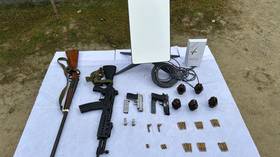Children could be killed by prison restraint techniques – report

Restraint techniques used against children and teenagers in young offenders’ institutions could kill them or leave them disabled, a report has found.
The Ministry of Justice (MoJ) has come under fire after an internal risk assessment concluded some authorized techniques for use against non-compliant children carry a 40 or 60 percent chance of causing injuries involving a child’s airway, breathing or circulation.
The risk assessment, seen by the Guardian, said the consequences of such injuries would be “catastrophic,” which is defined as “death or permanent severe disability affecting everyday life.”
In 28 of the 66 restraint scenarios assessed by an independent medical adviser there was at least a 40 percent chance of causing that level of harm, according to the newspaper.
Home Office backed secret drug trials on ‘irritable & restless’ children in the 60s https://t.co/AdekbqHuIEpic.twitter.com/CWdoGq6f6U
— RT UK (@RTUKnews) August 22, 2016
The assessment looked at the impact of minimizing and managing physical restraint (MMPR), a behavior management system developed following the death of 15-year-old Gareth Myatt, who died just three days into his sentence after being restrained by three G4S officers in 2004 for refusing to clean a toaster.
The report went public after a Freedom of Information request was submitted by Article 39, a children’s rights charity.
Article 39 director Carolyne Willow said: “What kind of society trains adults to use restraint techniques that could cause children to die or be severely disabled?
“Techniques assessed as potentially causing catastrophic harm to children, with a likelihood of more than never, should be immediately struck out of the manual.
Police using tasers on children 18 times a month despite UN ruling it as "torture" https://t.co/4qBLbcebDcpic.twitter.com/f68qXAVGV9
— RT UK (@RTUKnews) April 26, 2016
“Children have reported feeling terror, panic, desperation, shame, humiliation and anger during restraint. These testimonies from children, together with the appalling restraint-related deaths … should remain uppermost in our minds. We need a completely fresh start with policy and practice led by experts in looking after children.”
A Ministry of Justice spokesman said: “Restraint should only be used as a last resort, where there is a risk of harm, and where it is absolutely necessary to do so and no other form of intervention is possible or appropriate.
“Every incident of restraint is reviewed by the establishment. This includes looking at whether any lessons can be learned for the future.
“We have introduced a new system designed to minimize the use of physical restraint in youth custody and we are committed to improving practice further.”












